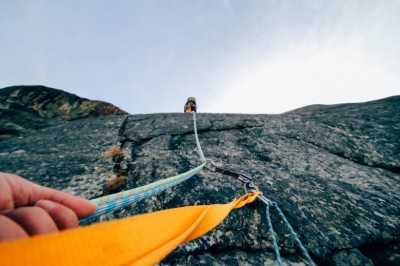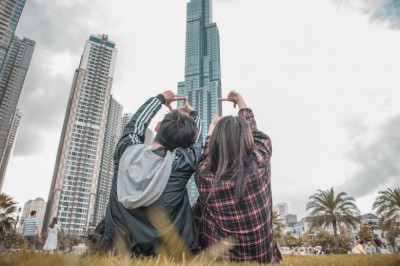Jacobsons Progressive Relaxation Technique
You can also get in the habit of relaxing muscles whenever you have an anxious feeling. When you feel a wave of anxiety, get in the habit of immediately scanning your body and trying to locate a tense muscle. Then relax it. Locate another tense muscle. Relax that too. As your muscles relax, your heart rate and breathing slow down and you begin to feel calmer. Even though terrorism still exists, your body is in a calmer state. You are more capable of thinking clearly and taking intelligent, purposeful, constructive action. Relaxing your muscles prevents you from becoming paralyzed by fear.
You can do this anytime, anywhere. Pay particular attention to the muscles in your face, upper back and neck. Memorize that short list: Face, upper back, and neck. Observe those places first. Your face is the best first place. Relax your forehead. Try it right now. Relax your jaw and the muscles around your eyes. Already your body begins to calm down.
It is recommended that you practice full Progressive Relaxation twice a day for about a week before moving on to the shortened form. Of course, the time needed to master the full procedure varies from person to person. Because you are using this to combat phobia anxiety, you will need to become proficient at it before putting it into full use in an anxiety producing situation.
Here are some suggestions for practice:
• Always practice progressive relaxation in a quiet place, along, with no electronic distractions - not even background music.
• Remove your shoes and wear loose clothing.
• Avoid eating, smoking, or drinking. Its best to practice before meals rather than after, for the sake of your digestive processes.
• Never practice after using any intoxicants such as drugs or alcohol.
• Sit in a comfortable chair if possible. You may practice lying down, but this increases the likelihood of falling asleep.
• If you do fall asleep, give yourself credit for the work you did up to the point of sleep.
• If you practice in bed at night, plan on falling asleep before you complete your cycle. Therefore, consider a practice session at night, in bed, to be in addition to your basic practice.
• When you finish a session, relax with your eyes closed for a few seconds, and then get up slowly. (Orthostatic hypotension-a sudden drop in blood pressure due to standing up quickly-can cause you to faint.) Some people like to count backwards from 5 to 1, timed to slow, deep breathing, and then say, "Eyes open. Supremely calm. Fully alert." You will be working with most all the major muscle groups in your body, but for convenience you will make a systematic progression from your feet upwards. Here is the most popular recommended sequence:
• Right foot
• Right lower leg and foot
• Entire right leg
• Left foot
• Left lower leg and foot
• Entire left leg
• Right hand
• Right forearm and hand
• Entire right arm
• Left hand
• Left forearm and hand
• Entire left arm
• Abdomen
• Chest
• Neck and shoulders
• Face
Information on list of phobias can be found at the Phobia List site.

























